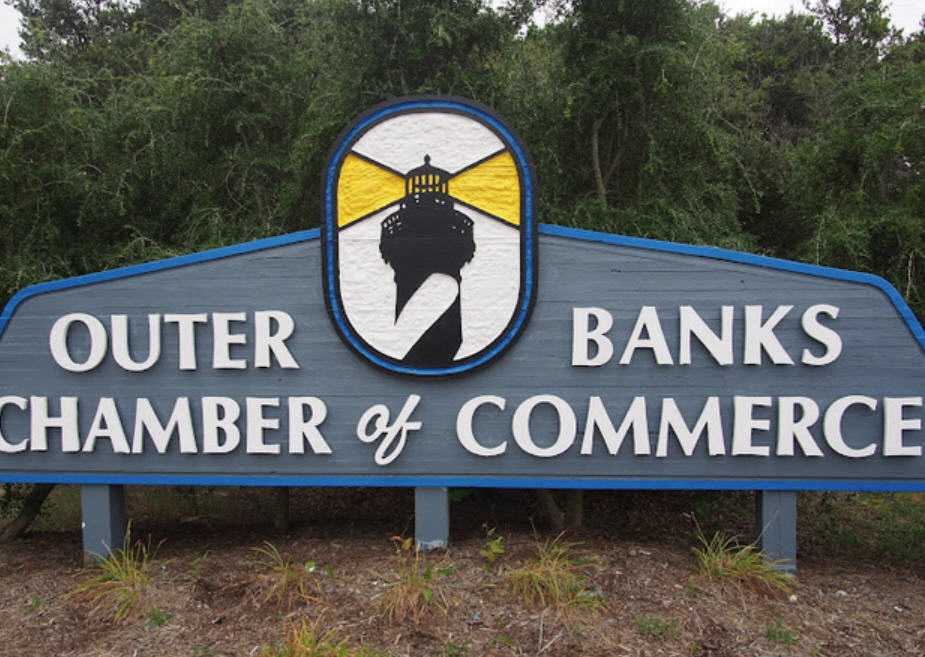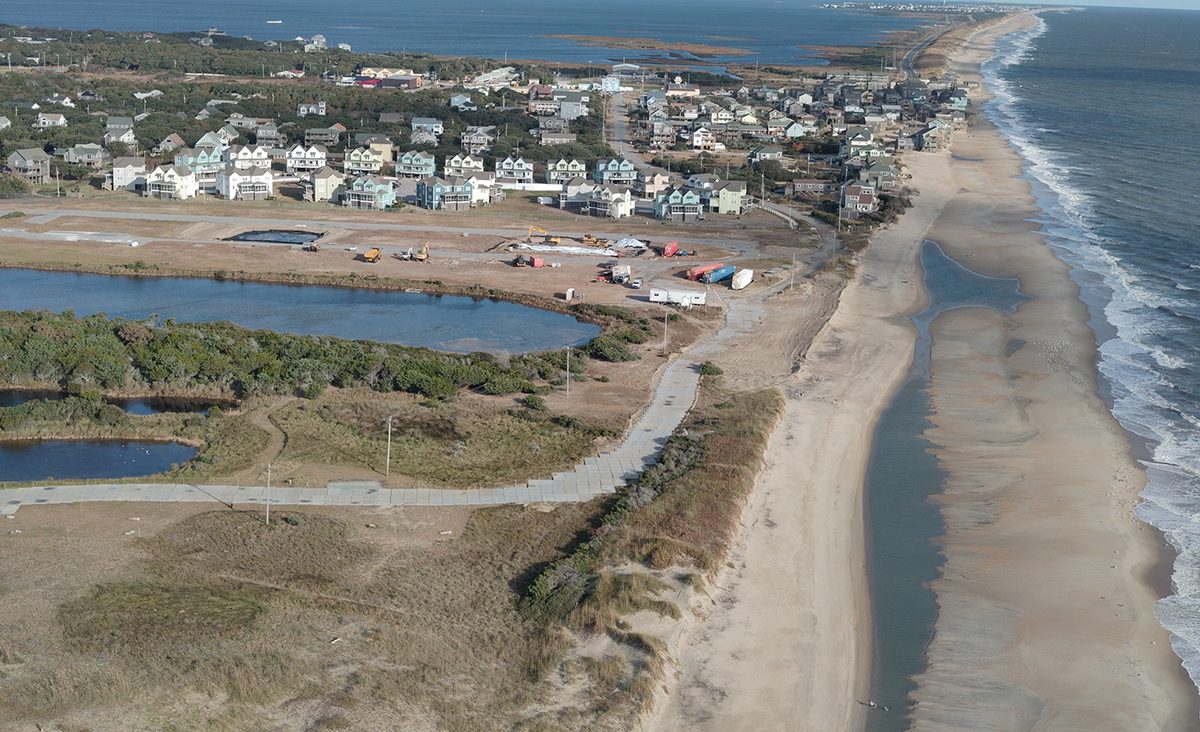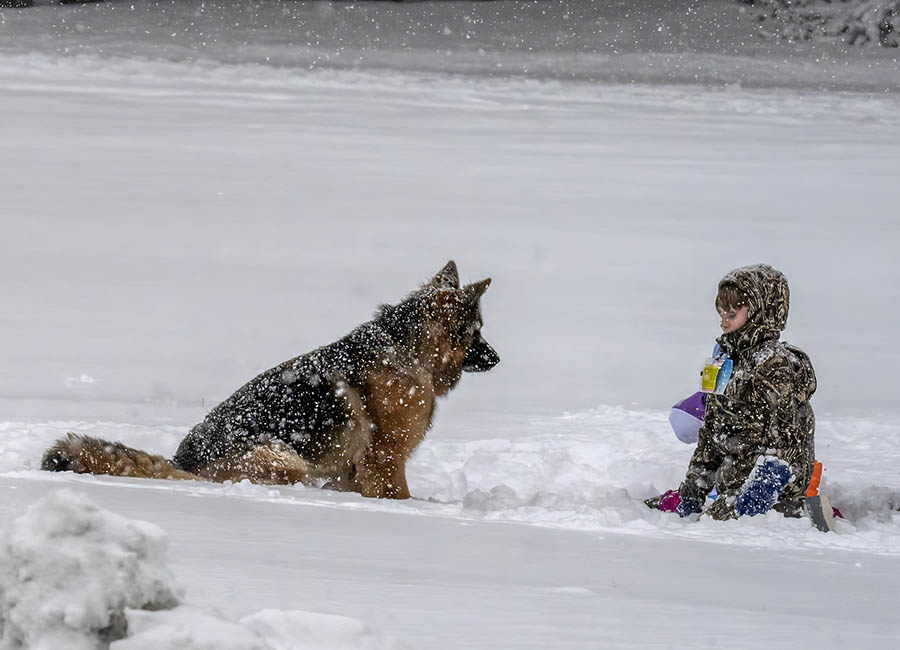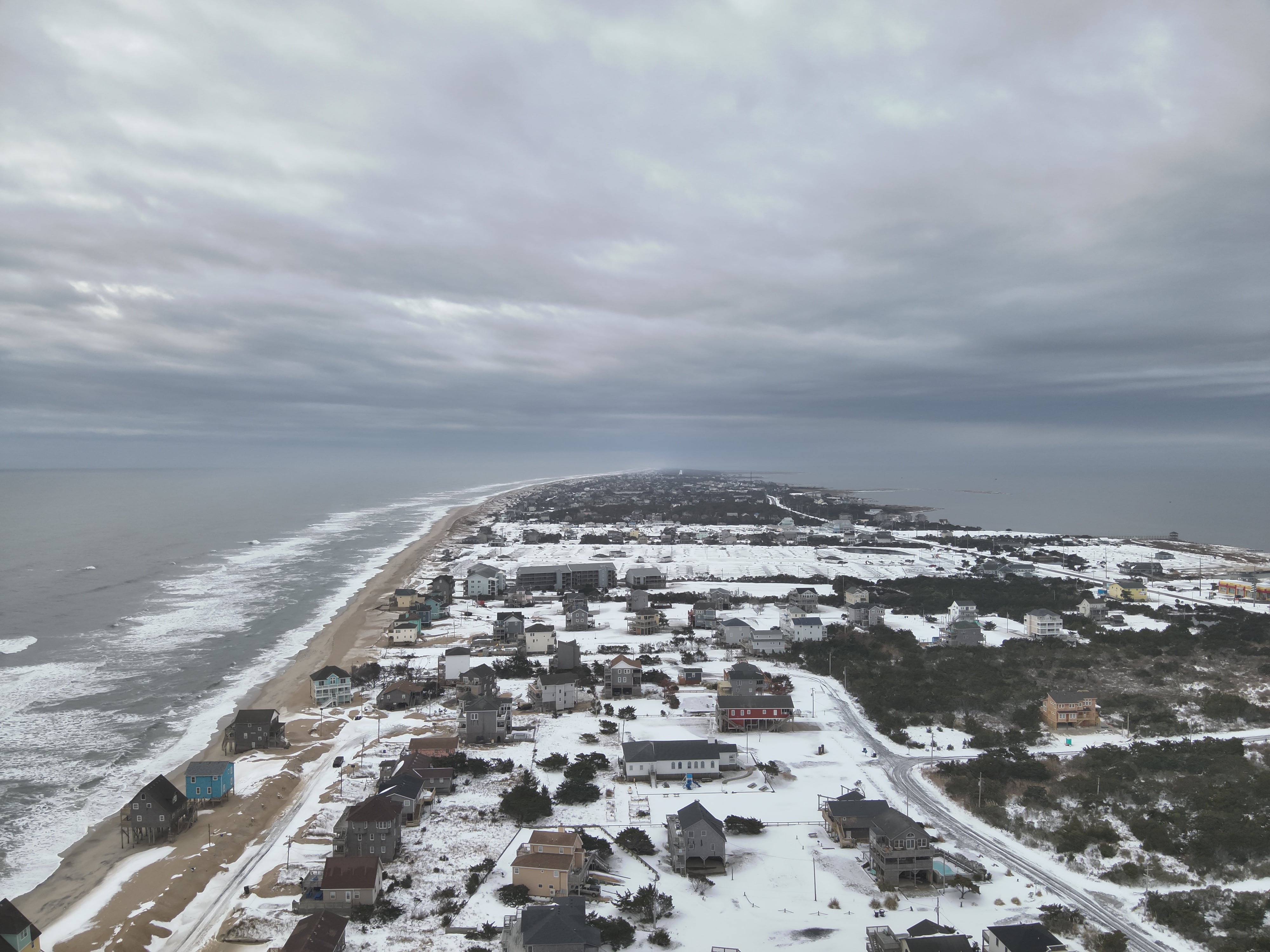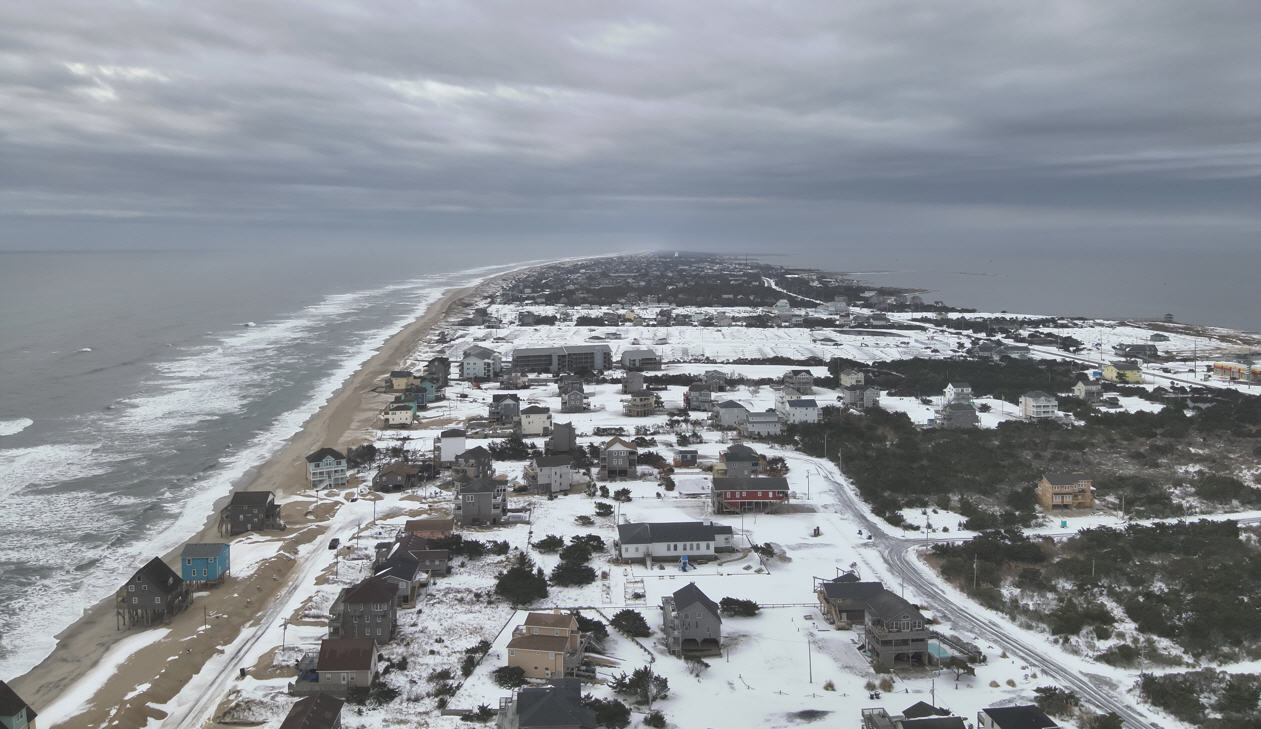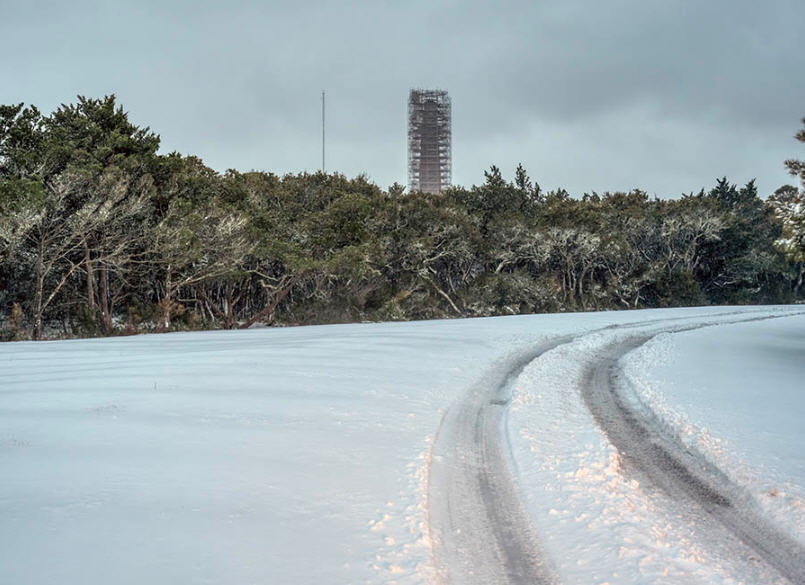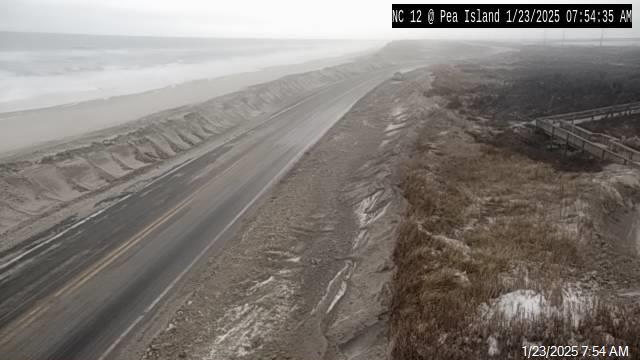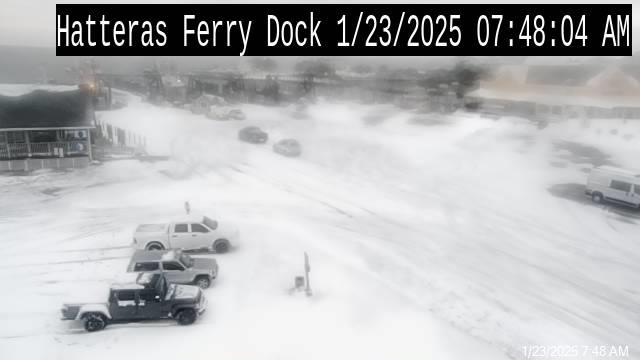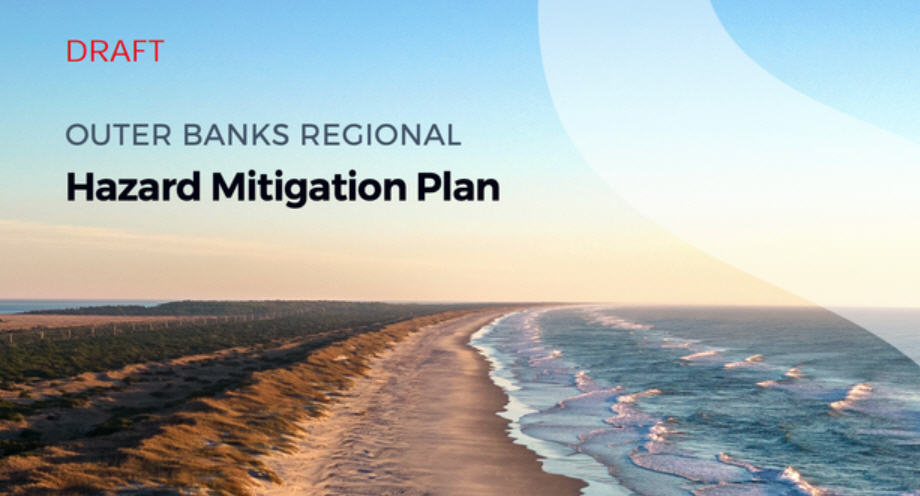Walking Ocracoke’s beach with Henry David Thoreau: Part 3
‘The ocean is a wilderness reaching round the globe, wilder than a Bengal jungle.”
–Henry David Thoreau
I decided to complete the third part of my “Walking with Thoreau” expedition in mid-March, after the gasoline prices had sky-rocketed a few days before, so I did not feel right about asking anyone to drive me to my taking-off spot at the Pony Pens. Instead, I drove my truck, with my bicycle loaded in the back, to the Airport ramp. I left my truck there and headed up Highway 12 on my bike, anticipating a good work-out and an enjoyable ride. It was both.
I had not ridden a bicycle that far up Ocracoke for a good while, and I had forgotten what a different impression the drive made when not speeding by at 55 mph. My bike is a funky affair of orange hue, dotted with rust spots, its seat wrapped in a turquoise plastic bag and secured with duct tape. The wheels screech on occasion, and sometimes the right pedal sticks. At no time could it ever be described as fast, and I am always grateful that it gets me to my destination at all.
From its seat, I had an excellent view of things not often noticed in my truck. I stopped for a moment at a stone marker, half hidden by brush, a sad reminder of a fatal car accident which had taken place there. When Thoreau walked across Cape Cod, he wrote not only about the beach but about the whole area, including the bay side, and the people who lived on the cape. I wanted to do a bit of the same on Ocracoke.
Past the campground I saw, to my left, dunes that were far taller than I had ever noticed. There was a little path near one, so I pulled over and hiked up to the top. From there I surveyed a world of miniature mountains folding into the distant Pamlico Sound –a sight that seemed quite remarkable to me.
Thoreau wrote about how he believed similar hills at Cape Cod were formed, saying:
“Beach-grass during the spring and summer grows about two feet and a half. If surrounded by naked beach, the storms of fall and winter heap up the sand on all sides, and cause it to rise nearly to the top of the plant. In the ensuing spring the grass sprouts anew; is again covered with sand in the winter; and thus a hill or ridge continues to ascend as long as there is a sufficient base to support it…Sand hills formed in this way are sometimes one hundred feet high and of every variety of form, like snow-drifts, or Arab tents, and are continually shifting…”
A little farther on, I noticed a path that cut across the dunes. Parking my bike and following it, I soon found myself on the shore of Pamlico Sound. Piles of grassy seaweed, Zostera marina, also known as eel grass, were tucked up against dead trees and other jetsam. This was the seaweed I hauled from the sound’s shores to tuck along my flower borders. It was the mainstay of the small goose known as the brant and provided habitat for numerous marine organisms.
Thoreau wrote about Cape Cod’s western shore and its Zostera, saying:
“The western shore was nearly as sandy as the eastern, but the water was much smoother, and the bottom was partially covered with the slender grass-like seaweed (Zostera), which we had not seen on the Atlantic side.”
Back on the road, I pedaled into the parking area across from the pony pen, and I glanced over at the two horses that stood behind the fence. I allowed myself a moment of regret that the famed wild ponies of Ocracoke no longer ran wild. Walking across the dunes toward the ocean, I imagined them running through the surf, plunging joyfully through the waves. I hoped that one day their freedom would, at least to some extent, be restored.
Thoreau spoke often about seeing horses at Cape Cod, although he did not mention wild ones. Upon seeing a newly born colt, he wrote with whimsy:
“They are as precocious as young partridges…Probably they expand at once on coming to the light and air, like a butterfly that has just come out of its chrysalis.”
On his June, 1857, walk at the Cape, he described a scene that was probably common on Ocracoke two centuries ago, when islanders transported ponies to Hatteras:
“Saw them swim three horses across from Saquish Head to the island, a quarter of a mile or more. One rows a small boat while a man holds the bridle. At first the horses swam faster than the man could row, but soon they were somewhat drawn after the boat.”
Having reached my destination, I tucked my bicycle behind a stand of yaupon trees and hiked along the path to the beach. The wind was light, the sky a mix of cirrus white and deep blue, and there was no sign of visible life. No dolphins plunged near the surf, no sea birds fished, no humans strolled the shore.
It was far from being a boring day, however, for it gave me time to observe and reflect on things not always noticed. After a while I sat down on a small dune just a little south of the Ocracoke Pony Pens and pulled out my worn copy of Thoreau’s “Cape Cod.”
“Before the land rose out of the ocean, and became dry land, chaos reigned; and between high and low water mark, where she is partially disrobing and rising, a sort of chaos reigns still, which only anomalous creatures can inhabit…”
I had been paying attention to that area between high and low water mark as I walked, where Thoreau’s chaos does indeed still reign. More specifically, I had been watching the formation and dissipation of the sea foam–countless bubbles that each wave creates and hurls onto shore.
It reminded me of a time when, as a child, I had poured way too much dish detergent liquid into the kitchen sink and turned on the tap, watching soapsuds fill the tub and overflow in snowy splendor onto the floor. Or, watching one particular bubble as it expanded, glittering with iridescent colors until it burst, like blowing bubbles through a wand at a child’s birthday party.
I wondered what created these bubbles. There was no soap detergent or bubblebath in the ocean, just this constant chaotic “disrobing and rising,” where energy, air, and water met. The mix emerged as a bubbly froth which rushed up onto the beach, then melted away as each bubble reached its peak and burst. Sometimes the bubbles left little patterns in the sand before the next wave washed them away.
Thoreau referred to this froth when he wrote:
“The white breakers were rushing to the shore; the foam ran up the sand, and then ran back as far as we could see…as regularly as the master of a choir beats time with his white wand…”
It was Sunday, nearing 11 o’clock now, a time when many would be heading for church. I am not a church-goer, nor am I affiliated with any formal religion, although I respect the beliefs of those who are. For me, this great expanse of sand and sea was as holy a place as I could imagine, and I tend to agree with Thoreau, who wrote in his 1857 account:
“All genuine goodness is original and as free from cant and tradition as the air. It is heathen in its liberality and independence on tradition.”
Wanting to know more about Thoreau’s thoughts on religion and such things, I sat down and scanned the pages of his book. Referring to the town of Eastham, he wrote:
“..they very early built a small meeting-house, twenty feet square, with a thatched roof through which they might fire their muskets –of course, at the Devil. In 1662, the town agreed that a part of every whale cast on shore be appropriated for the support of the ministry…Think of a whale having the breath of life beaten out of him by a storm, and dragging in over the bars and guzzles, for the support of the ministry! What a consolation it must have been to him!”
A few miles below Manomet, Thoreau spent the night with a prayerful man about whom he wrote:
“…the worst of it is that these evidences of ‘religion’ are no evidence to the traveler of hospitality or generosity. Though he hears the sound of family prayer and sees sanctified faces and a greasy Bible or prayer-book, he feels not the less that he is in the hands of the Philistines…”
I found many comments throughout the book which, while often tongue-in-cheek, indicated that Thoreau distrusted organized religion.
Walking farther down the beach, I glanced leeward, noting absently the row of electric poles that stood at regular intervals along the island. Thoreau’s 1857 trek took place soon after a similar set of poles and wires was installed on Cape Cod. He wrote, referring to a treeless plain:
“…the new telegraph wires are a godsend to the birds, affording them something to perch on.”
As I neared the airport I came upon what I at first thought was a small blue balloon. Knowing how dangerous these seemingly harmless toys could be to sea turtles, I reached down to pick it up. Seeing it more clearly, I realized that it was not a balloon at all but a small Portuguese man-of-war — a kind of jellyfish whose tentacles can retain their powerful sting even when dead and dried up, as this one was.
It was because of the close resemblance that balloons have to these and other jellyfish that they are so deadly if they reach the ocean. Despite their sting, jellyfish are a favorite food of leatherbacks and other sea turtles. A helium balloon, released at a birthday party and blown into the ocean, may look like dinner to a passing leatherback, but it is a death sentence as well. Sea turtle necropsies had, I knew, revealed alarming numbers of turtle stomachs stopped up and entwined with balloons.
Thoreau wrote about this same topic in 1849:
“You might make a curious list of articles which fishes have swallowed,–sailors’ open clasp-knives, and bright tin snuff-boxes, not knowing what was in them,–and jugs, and jewels, and Jonah…”
A new sound met my ear, and I turned to watch a single-engine plane take off, flying close over my head. I was approaching the airport, and my day’s beach walk was ending. Wondering what Thoreau would have thought of that sight, I headed up the ramp to where I had left my truck. I drove back to retrieve my bicycle and went home, bidding farewell, at least for the day, to the place where Thoreau wrote:
“… a man may stand there and put all America behind him…”
Subject
Name
(required, will not be published)
(required, will not be published)
City :
State :
Your Comments:
May be posted on the Letters to the Editor page at the discretion of the editor.
May be posted on the Letters to the Editor page at the discretion of the editor.
May be posted on the Letters to the Editor page at the discretion of the editor.
May be posted on the Letters to the Editor page at the discretion of the editor.




